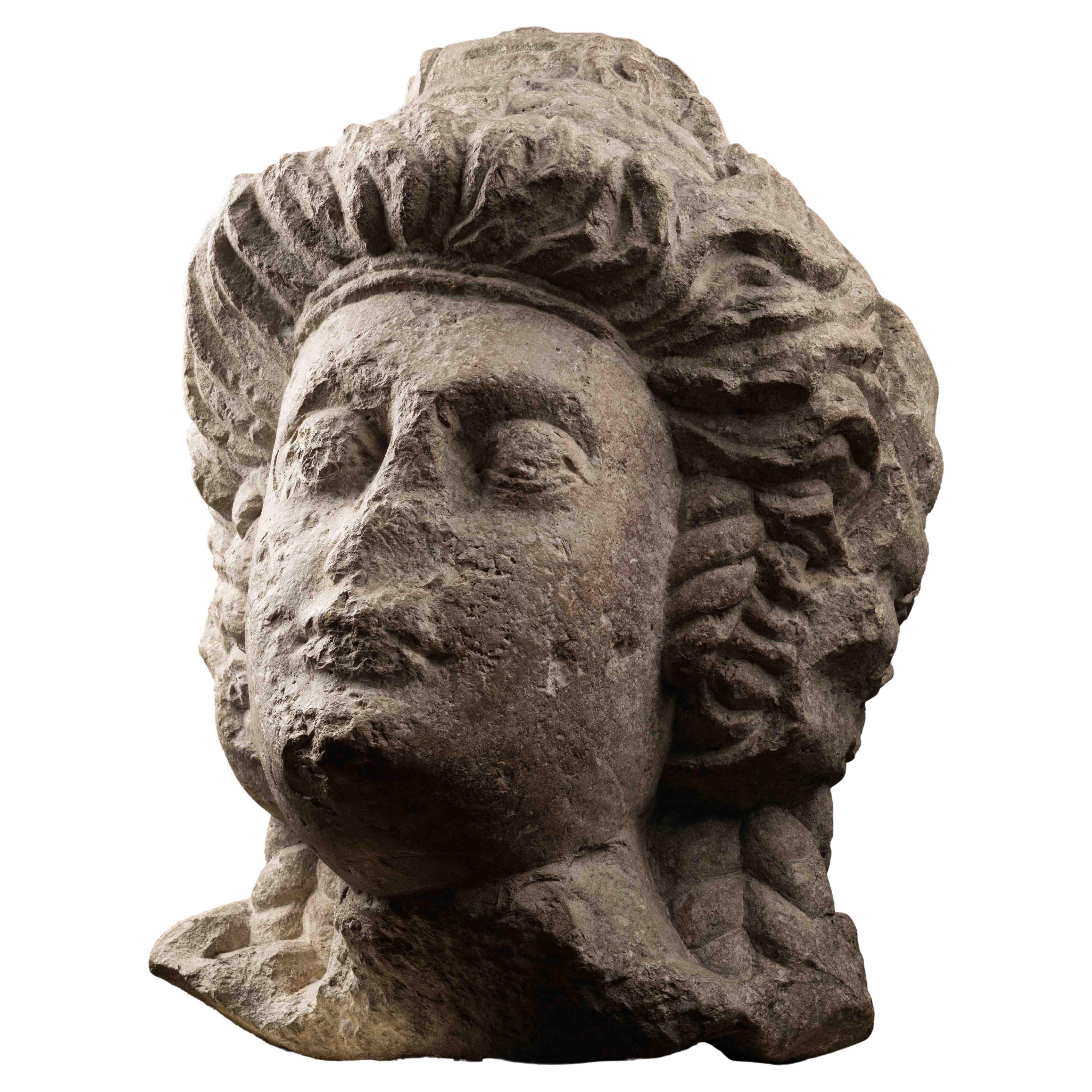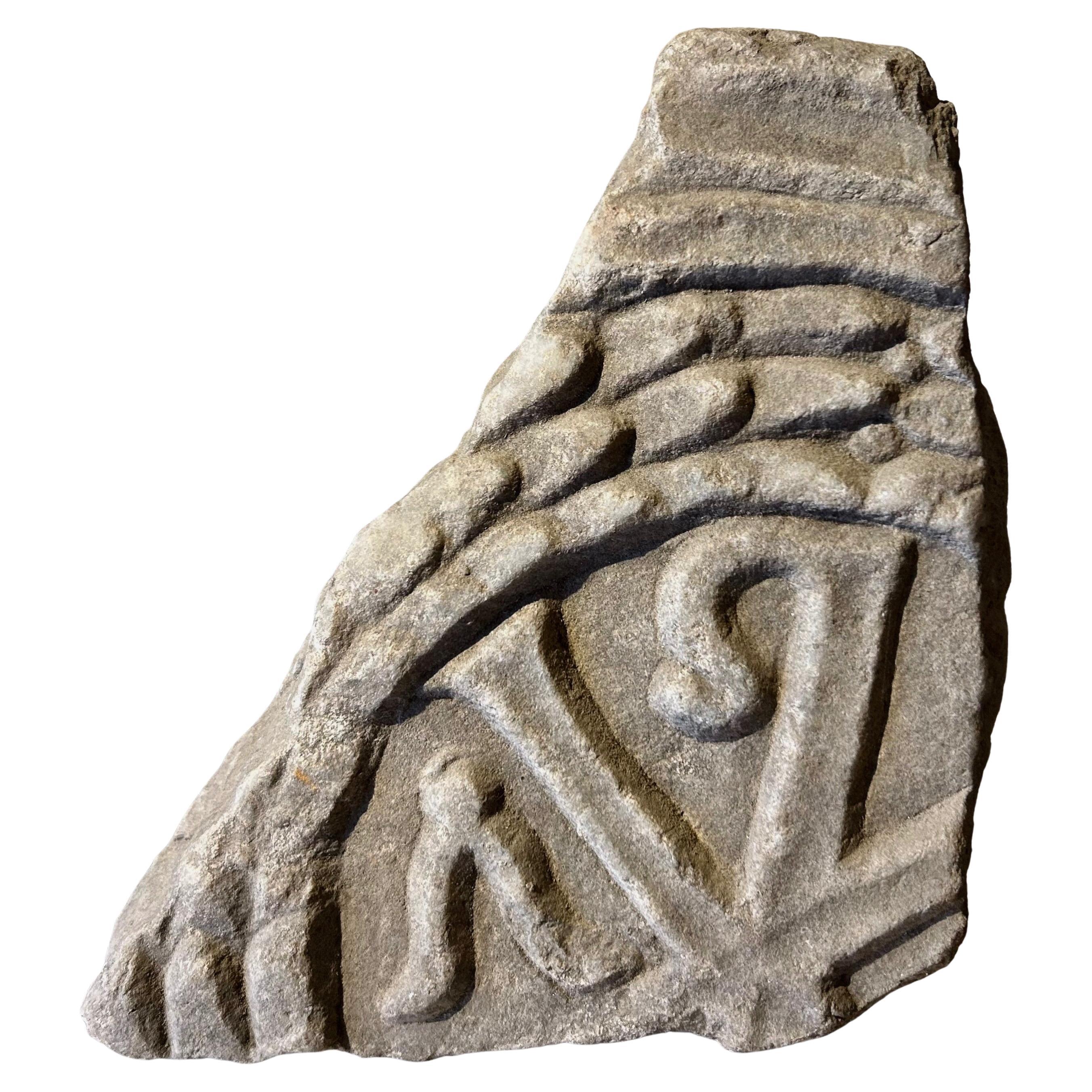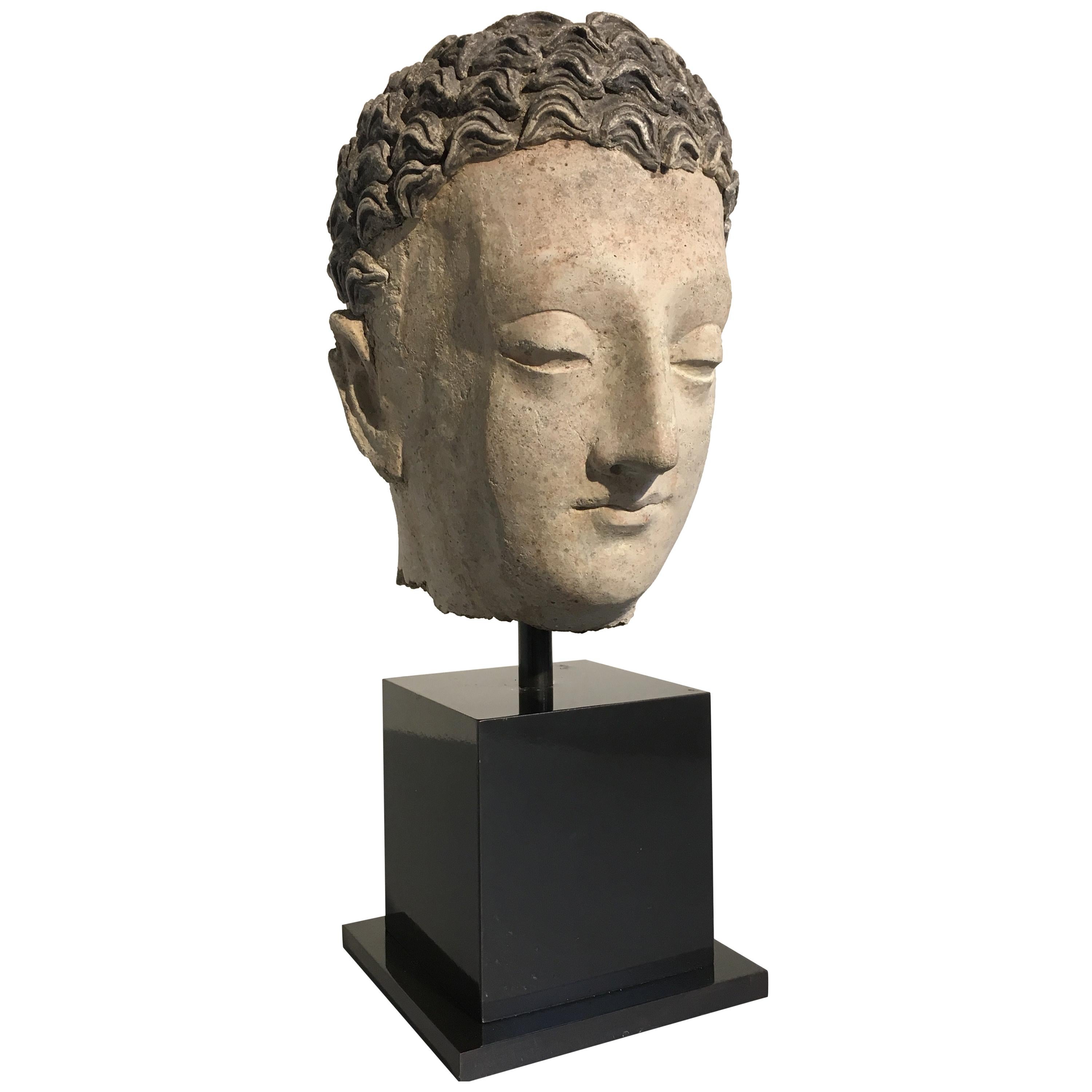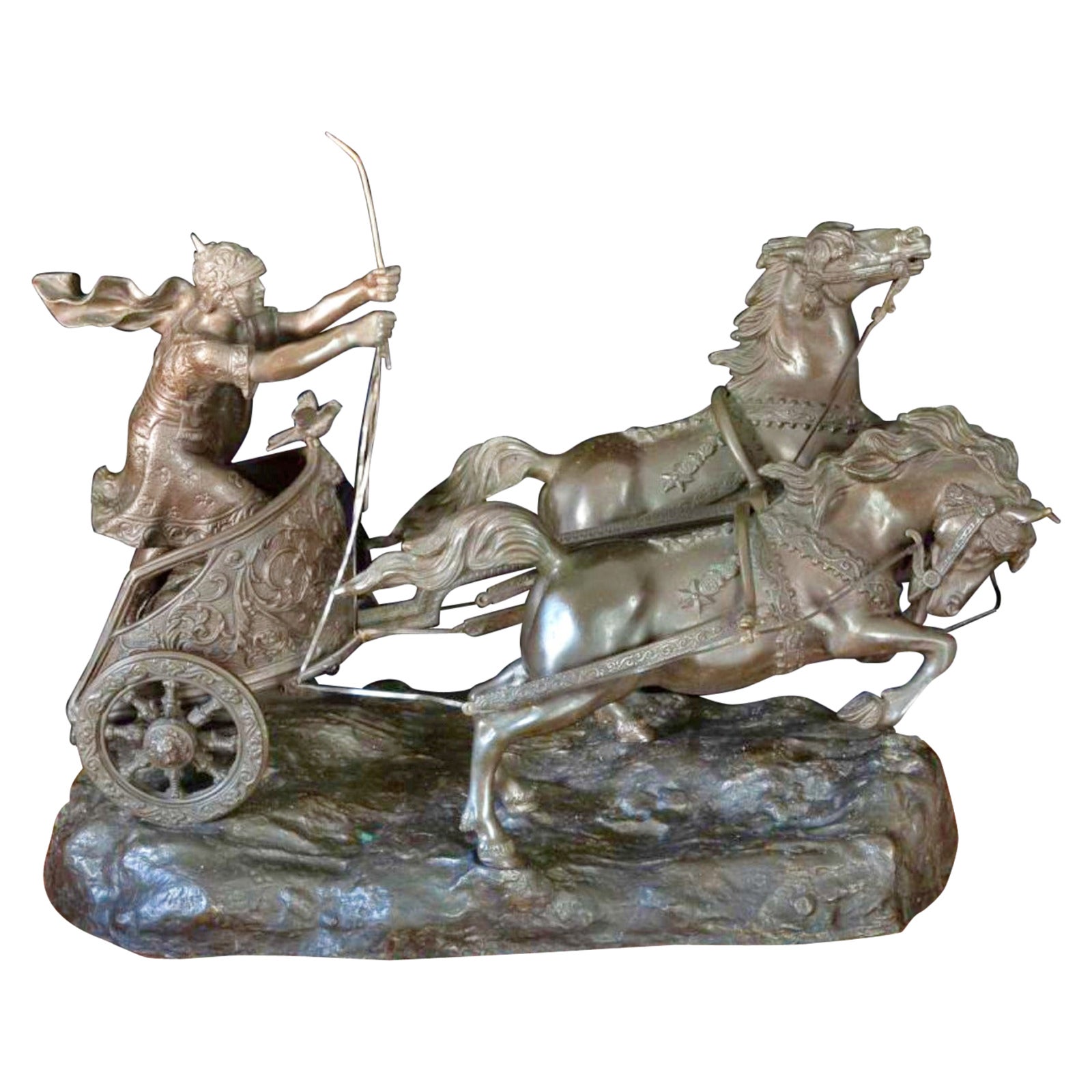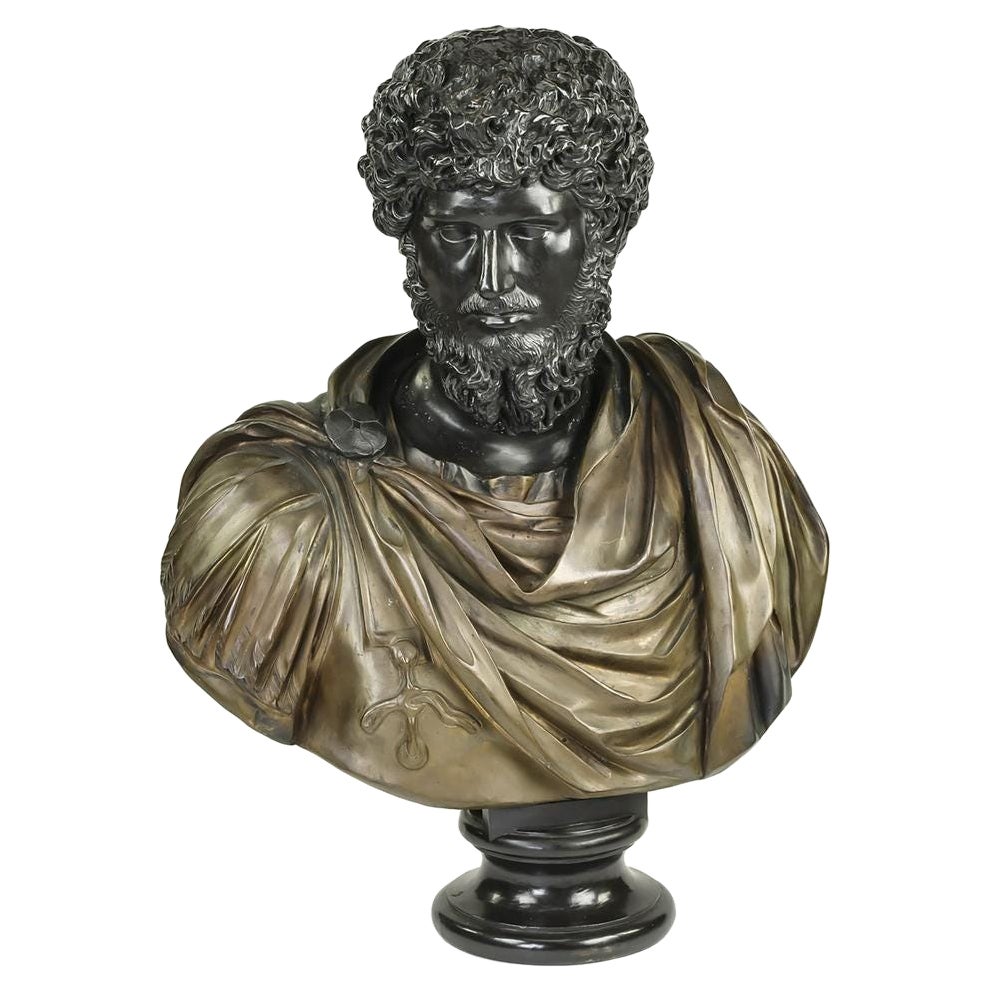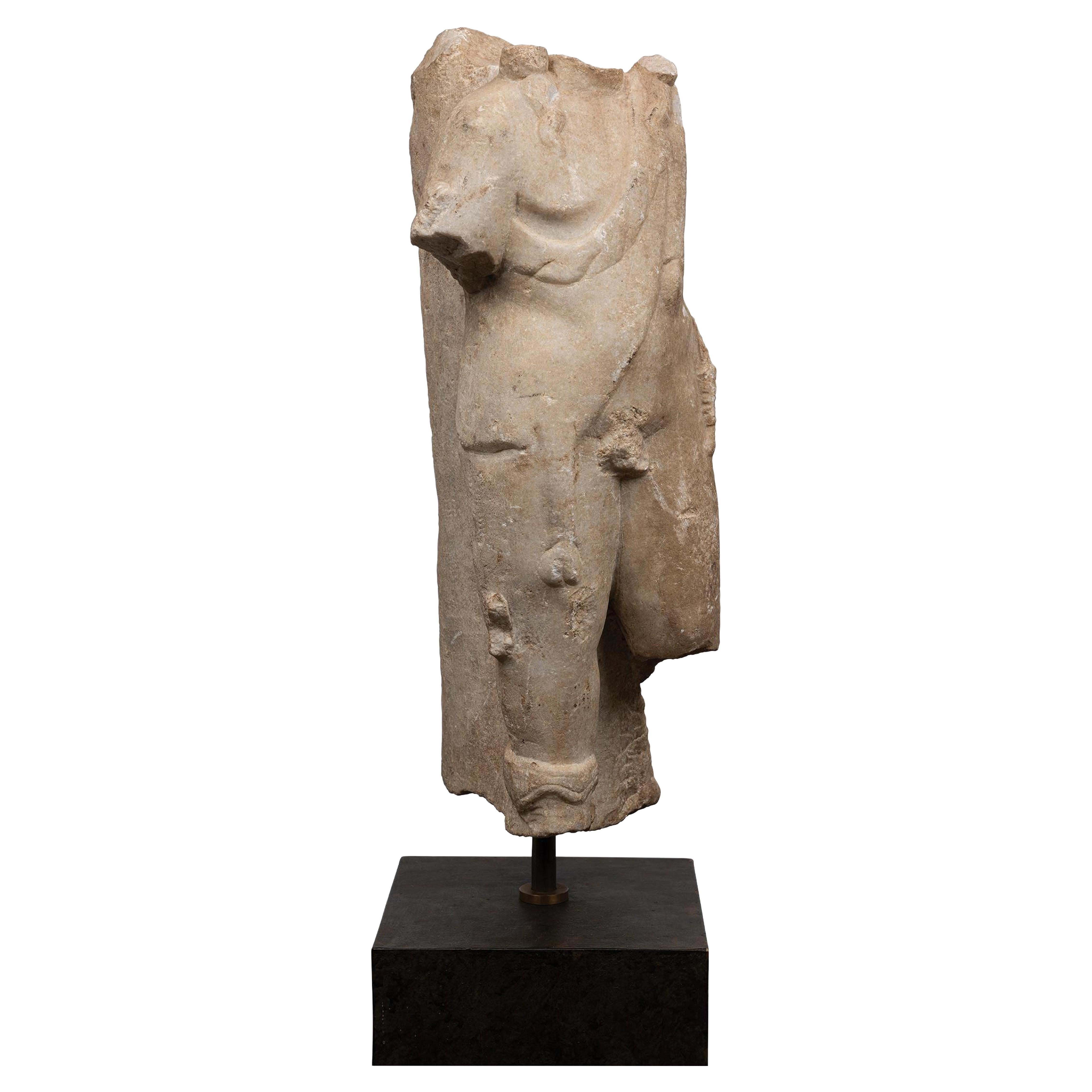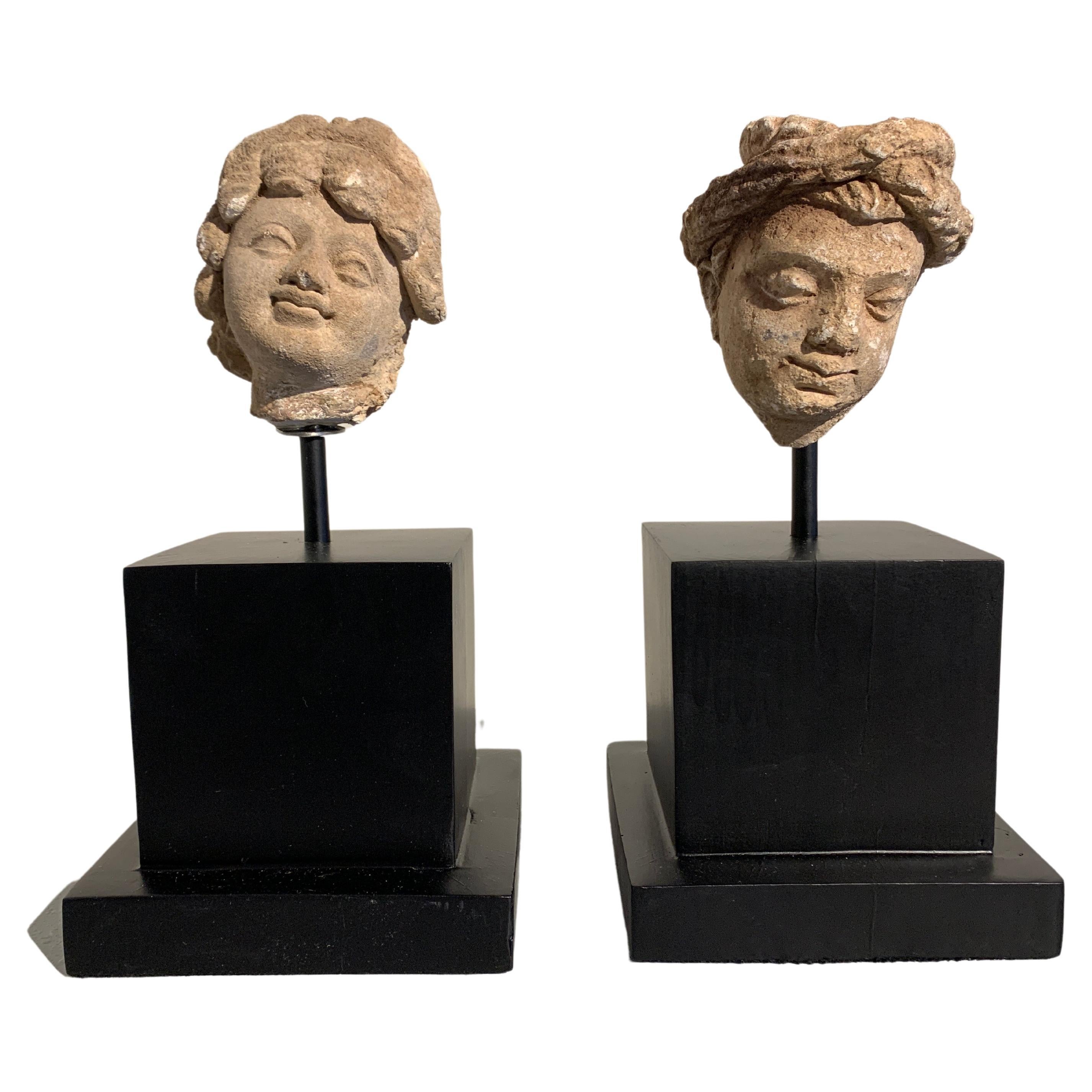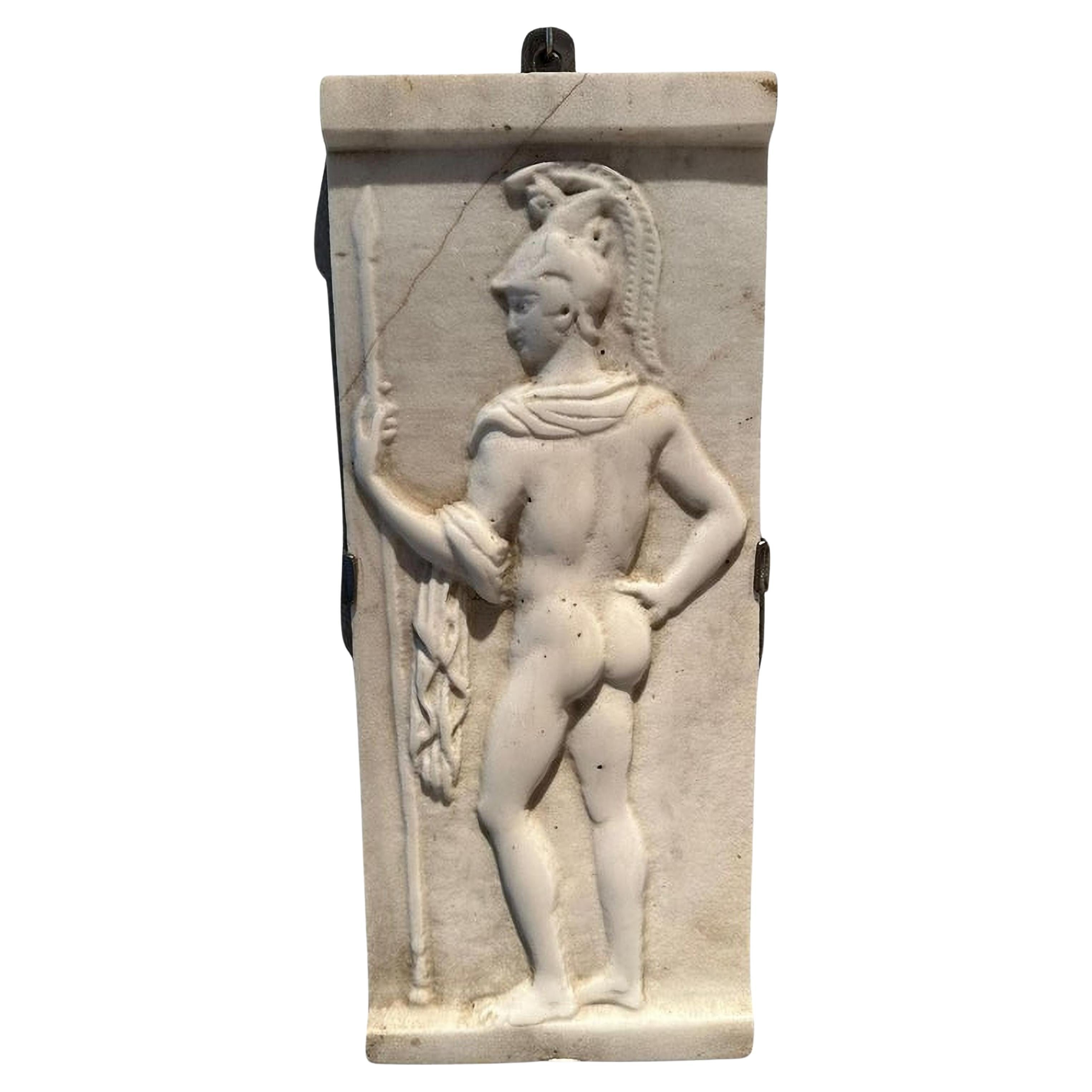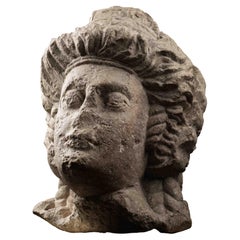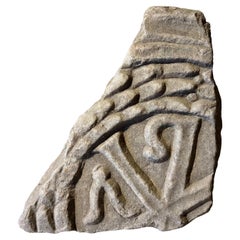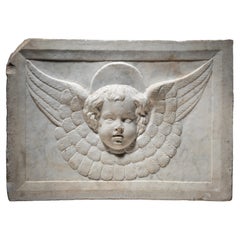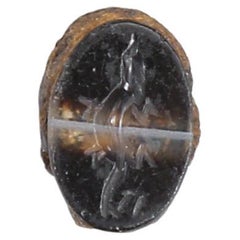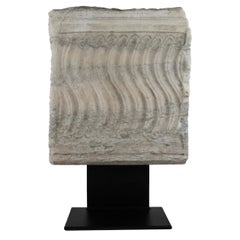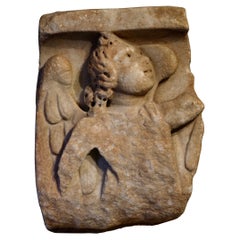
Roman Relief Depicting Eros, 3rd Century AD
View Similar Items
Want more images or videos?
Request additional images or videos from the seller
1 of 6
Roman Relief Depicting Eros, 3rd Century AD
About the Item
- Dimensions:Height: 11.82 in (30 cm)Width: 8.08 in (20.5 cm)Depth: 2.37 in (6 cm)
- Style:Classical Roman (Of the Period)
- Materials and Techniques:
- Place of Origin:
- Period:
- Date of Manufacture:3rd Century AD
- Condition:Wear consistent with age and use.
- Seller Location:Bruxelles, BE
- Reference Number:1stDibs: LU6666233767872
About the Seller
5.0
Vetted Seller
These experienced sellers undergo a comprehensive evaluation by our team of in-house experts.
1stDibs seller since 2022
6 sales on 1stDibs
Typical response time: 7 hours
More From This SellerView All
- Monumental Feminine Head - Roman Empire - 3rd-4th Century AdLocated in Bruxelles, BEVery large feminine head crowned by a tiara Roman period, 3rd - 4th century AD Eastern provinces of the Roman Empire (Palmira?) gray basalt H 55 cm Old collec...Category
Antique 15th Century and Earlier Syrian Greco Roman Figurative Sculptures
MaterialsStone
$21,988 Sale Price20% Off - Marble Roman relief representing a ChristogramLocated in Bruxelles, BEMarble Roman relief representing a Christogram Roman relief - 4th century 25 x 22 x 8 cm Provenance : Collection of the Château de B. À Nevers by Georges C.S., scholar born in 1833 and deceased in 1909 The entire castle and its collections were acquired in 1938 by the current owners of the estate A christogram is a monogram or combination of letters that forms an abreviation for the name of Jesus Christ. This rare fragment combines chi (X) and rho (P), the first two letters of Christ's name in Greek and it is one of the oldest and most popular early christian symbol. The monogram of Christ, or chrismon, is also a powerful symbol of imperial victory: it appeared to Emperor Constantine the Great before his battle against Maxentius in ad 312, promising victory in the name of Christ. In Plato's Timaeus, it is explained that the two bands which form the "world soul" (anima mundi...Category
Antique 15th Century and Earlier Italian Classical Roman Figurative Scul...
MaterialsMarble
- Cercle of Jacopo della Pila - Marble relief depicting a winged CherubLocated in Bruxelles, BECercle of Jacopo della Pila (Lombard, in Naples 1471-1502) Marble relief depicting a winged Cherub Naples, second half of15th century 40 x 57 x 12 cm Exquisitely carved, this relief portrays a winged cherub with cascading hair and delicate features. The cherub's plump, smooth countenance, rounded cheeks, outlined lips, and finely drawn nose emanate a sense of tenderness. The quadrangular module, is adorned with a carved frame. The relief ascends gradually, transitioning from the low relief of the wings to the high relief of the head. The rectangular frame and the subtly curved form of the artwork suggest that the relief likely adorned the upper part of an arch or a vaulted chapel. The type is that of the perspective room with a coffered ceiling decorated with figures of winged cherubs, which is found in various Neapolitan chapels of the 15th century. Coffered ceilings attest to the recovery of antiquity and the search for luxury in Renaissance architecture, first in Florence, then in Rome and Naples. The majority of the numerous family chapels and tombs built during the late fifteenth century in south of Italy employ the new formal vocabulary of the Florentine Renaissance in a self-confident manner that permitted a broad spectrum of variations. The escalating admiration for the classical world, coupled with the development of perspective, significantly contributed to the Renaissance endorsement of coffered ceilings. This artistic and constructive device drew inspiration from the intricate marble patterns observed in historical landmarks such as the Arch of Titus, the Temple of Vesta in Tivoli, the Pantheon, and the Basilica of Maxentius. A distilled product of both mathematical and artistic cultures, deeply scrutinizing the ancient world, the coffered ceiling plays a vital role in the perspective construction of space with its regular and directional geometry. The motif of the coffered ceiling decorated with cherubs in relief was introduced in Naples by Francesco Laurana in the plastic decoration of the Arch of Castelnuovo. Laurana's impact on the art scene in the south of Italy was profound. The introduction of the winged cherub into the region's artistic vocabulary bridged the gap between the classical and the contemporary, creating a synthesis that resonated with both aesthetic and spiritual sensibilities. His influence extended beyond the immediate visual appeal, shaping the cultural identity of the Renaissance in southern Italy. Although the plastic decoration of the Arch of Castelnuovo cannot certainly be ascribed to a mature Renaissance style, it was precisely on this occasion that the sculptors who worked there could get to know and export throughout the Italian peninsula that type of "Florentine classicism" which, even in the 15th century Naples, was conditioned by the Burgundian culture imported into the Kingdom by Alfonso of Aragon himself, with artists called from Spain and Northern Europe. The coffered ceiling, with its geometric patterns and Laurana's winged cherubs nestled within, became a symbol of refinement and cultural sophistication. The relief sculptures, carefully integrated into the overall design, transformed the ceiling into a celestial realm, inviting viewers to contemplate the divine while immersed in the grandeur of the Renaissance space. Similar winged cherubs appears also in the Naples cathedral. Within the renowned Succorpo Chapel, a mesmerizing marble coffered ceiling adorned with cherubs epitomizes the splendor of the Neapolitan Renaissance. The interplay of light and shadow on the textured surface of the marble coffered ceiling introduces an ethereal dimension, providing an immersive visual experience for observers. The geometric precision and the repeated patterns, reminiscent of classical motifs, establish a sense of harmony and balance that has become the hallmark of the Neapolitan interpretation of Florentine Renaissance aesthetics. Although probably intended to be admired from a distance, this cherub is intricately detailed and exquisitely rendered: the face and hair are elegantly outlined and the feathers are textured through juxtaposed lines. The marble, both figurative and decorative, adheres to the principles of balance and restrained ornamentation typical of the « Florentine Classicism ». Harmonious shapes and gracefully orchestrated curves , rooted in the classical repertoire, converge to evoke a sense of ethereal beauty. The surface displays the masterful use of a chisel to intricately carve the feathers and facial features, creating an almost abstract quality. This work is a testament to a sculptor of great skill and rich figurative knowledge, seamlessly blending classical firmness in contours with a refined treatment of the marble's surface. The combination of tradition and innovation point to a stylistic idiom from Lombardy, in particular we can find some comparaisons with the works of Jacopo della Pila, sculptor of Lombard origin working in Naples in the second half of the 15th century. He is documented there between 1471 and 1502, and is a protagonist of the Aragon Renaissance in the second half of the Quattrocento, together with the other great Northern sculptor active in the kingdom, Domenico Gagini. the first commission he received dates back to August 9, 1471, when Jacopo publicly committed to sculpting the funerary monument of Archbishop Nicola Piscicelli to be placed in the Cathedral of Salerno. The last known work is an altar ordered on July 29, 1502, by the noble Jacopo Rocco for the church of San Lorenzo Maggiore in Naples. Between these two chronological extremes (1471-1502), we must place the fervent activity of the artist, who had trained in Rome, perhaps under the guidance of Paolo Romano but also engaged in dialogue with other major artists of the city, especially Isaia da Pisa. He enriched his experience in Naples, initially drawing inspiration from the works of Domenico Gagini and later from the Tuscan masterpieces of Antonio Rossellino and Benedetto da Maiano destined for the church of Santa Maria di Monteoliveto. Jacopo della Pila's artistic personality is thus based on a complex interplay of influences, contributing to the definition of a highly personal style. Close comparaison can be made between our cherub and the winged angels reliefs...Category
Antique 15th Century and Earlier Italian Renaissance Figurative Sculptures
MaterialsMarble
- Roman Corinthian Capital, Flavian Period, 1st Century ADLocated in Bruxelles, BERoman corinthian capital Marble Flavian period, 1st century AD H 40 x L 42 x P 40 Provenance : Private collection United Kingdom.Category
Antique 15th Century and Earlier Italian Classical Roman Architectural E...
MaterialsMarble
- Rare Romanesque Capital Depicting Four Africans, Apulia, 13th CenturyLocated in Bruxelles, BELarge stone capital carved on each side in strong relief. The basket is covered with two crowns of vertical acanthus leaves which sprout from the astragal and fill the space between ...Category
Antique 15th Century and Earlier Italian Medieval Architectural Elements
MaterialsStone
$20,229 Sale Price20% Off - Balsamarium shaped as a Bust of a Black Boy - Roman, 1st – 2nd Century ADLocated in Bruxelles, BEBalsamarium shaped as a Bust of a Black Boy Bronze, silver inlaid eyes and lips, Roman, 1st – 2nd Century AD Provenance: Private London Collection formed 1965-1975 H 10 cm (4 in...Category
Antique 15th Century and Earlier Italian Classical Roman Models and Mini...
MaterialsSilver, Bronze
You May Also Like
- Original Antique (3rd Century AD) Roman Carved Agate IntaglioLocated in Chicago, ILIntaglio is a technique which dates back to antiquity and is still in use today. Images are carved or engraved in gemstones leaving a hollow impression in the untouched background. T...Category
Antique 15th Century and Earlier Italian More Furniture and Collectibles
MaterialsAgate
$950 Sale Price24% Off - Roman Antique Marble Sculpture, 2nd Century Ad, South of FranceLocated in Girona, SpainRoman Antique marble sculpture, 2nd century AD, South of France. This sculpture is a Roman Antiquity. Frontal section of a Roman Sarcophagus. Made...Category
Antique 15th Century and Earlier French Classical Roman Mounted Objects
MaterialsMarble, Iron
- Gandharan Stucco Head of the Buddha, 3rd-5th CenturyLocated in Austin, TXA sublime Greco-Buddhist stucco head of the Buddha, ancient region of Gandhara, circa 3rd-5th century. A fragment of a larger statue, the Buddha's face...Category
Antique 15th Century and Earlier Pakistani Figurative Sculptures
MaterialsStucco
- Roman Bronze Sculpture Depicts Roman Chariot 19th CenturyBy Europa AntiquesLocated in Madrid, ESRoman bronze sculpture Depicts Roman Chariot 19th century Measures: cm. 33 × 66 H. 50 Good conditions.Category
Antique 19th Century Italian Baroque Figurative Sculptures
MaterialsBronze
$2,814 Sale Price20% Off - Fine Large 19th Century Continental Bronze Bust Depicting a Roman DignitaryLocated in Dallas, TXFine Continental Roman style bronze bust, late 19th century, depicting a curly haired and bearded young man wearing classical drapery pinned on his l...Category
Antique Late 19th Century Italian Classical Roman Busts
MaterialsBronze
- A Roman Marble Sculpture of Hercules, Circa 1st / 2nd Century ADLocated in ARMADALE, VICA Roman Marble Sculpture of Hercules, Circa 1st / 2nd Century AD The sculpture is nude except for the draped Nemean lion skin. Provenance: Sotheby's London, December 14, 1981, lot ...Category
Antique 15th Century and Earlier European Classical Roman Figurative Scu...
MaterialsMarble
Recently Viewed
View AllMore Ways To Browse
3rd Century
Italian Relief
Engraved Roman
15th Century Italy
15th Century Italian
Classical Relief
15th Century Italian Furniture
Roman Relief
Marble Sculpture Fragment
Classical Relief Sculpture
Marble Relief Decorations
Marble Sculpture Ad
Marble Relief Roman
Roman Marble Fragment
Roman Sarcophagus
Marble Sarcophagus
17th Cherub
Antique Carved Wooden Angels
